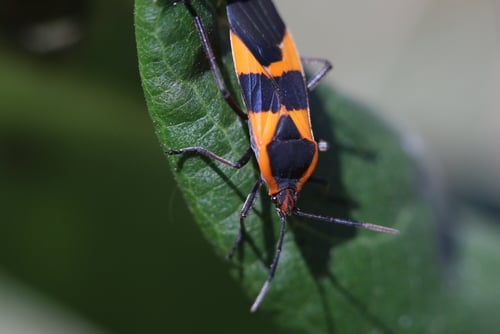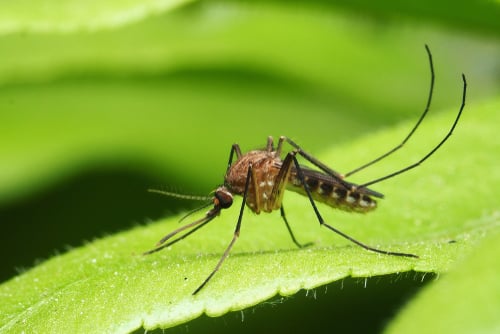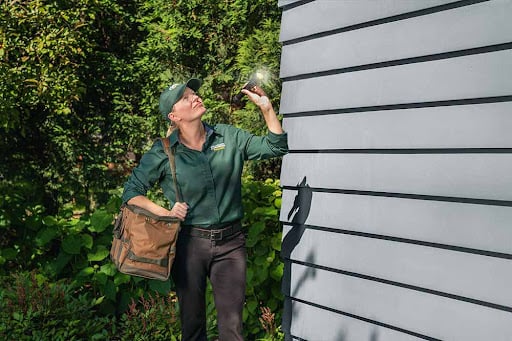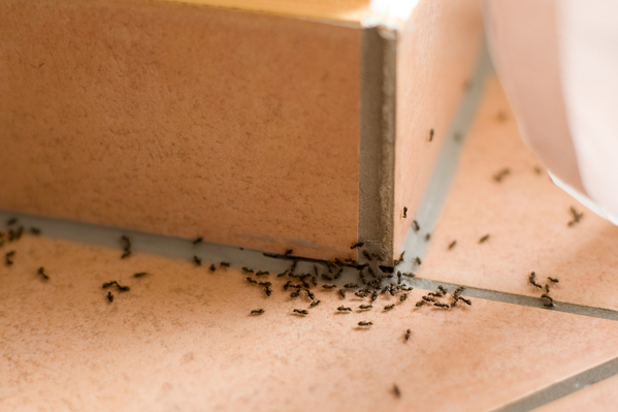Spring is a time of renewal that buzzes with possibilities. But is that buzzing coming from inside your home? As dormant life emerges and eggs laid last fall begin to hatch, hungry pests can congregate in your yard or home looking for their next meal. As the mercury rises, so does the number of nuisance insects. Do you know how to protect your home and yard?
As your neighborhood spring pest control experts, we wanted to highlight the most problematic pests this time of year and pass on a few tips on how to keep them from invading your space. If the buzz gets to be too much, call Plunkett’s for all your spring indoor and outdoor pest control needs.
6 Common Spring Home and Yard Pests
There are plenty of flying insects and crawlies that hatch in April and May. These are some of the more problematic ones that we get the most calls about. Included are tips on how to stave off the spring infestation:
Ants
Ants, and especially carpenter ants can be a serious nuisance in the spring. New larvae hatch and adults that have been dormant underground (or hiding in your house) spring to life. Some common ants (such as carpenter ants, field ants, and pavement ants) can swarm in the spring, which can be a sign of infestation. Field ants commonly invade kitchens and pantries searching for sweet foods to bring back to the colony. Carpenter ants take refuge in walls and ceilings where moisture has made the wood soft. Seal entry points to keep ants out.
Termites
Like carpenter ants, termites can go undetected for a long period of time before you notice the marks they’ve left in your wood. You might find them most active after rain storms or see piles of discarded wings where flying termites or “swarmers” have landed and decided to make your home their new nest. If you find holes, mud tubes or piles of discarded wings, call a pest control professional immediately.
Boxelder Bugs

While they may not pose a serious threat to your home, boxelder bugs that have hidden all winter can suddenly appear en masse. You might see large numbers of these black and red bugs gathered around windows or doors trying to get out. Vacuum them up or call a pest control professional when the infestation becomes too much. Make sure window gaps get sealed to keep them out.
Wasps
Wasps are probably the most dreaded spring pest. These stinging insects can quickly turn a family BBQ or friendly game of croquet into a painful nightmare. In the fall, all members of the wasp colony die after producing a crop of new queens. These new queens mate in the fall, hibernate through winter, and fly off in spring to start new colonies. Keep an eye on areas where you’ve seen wasps in the past. Monitor eaves, garages, gazebos and pergolas for signs of wasp activity and then call a professional. It’s easier to remove nests before they’re well established
Mosquitoes

Mosquitoes may not start biting until late spring/early summer but the conditions for their emergence begin in the spring. Rain showers create pools of water for the larvae to grow in. To limit the number of mosquitoes in your yard, make sure you regularly empty buckets, flower pots, gutters and other containers that could collect water. If you have large pools or puddles of standing water in your yard, consider landscaping options to remove them. A seasonal mosquito treatment from Plunkett’s can reduce the mosquito population near you.
Ticks
Along with wasps and mosquitoes, ticks are among the most feared spring pests. These hearty creatures can be active once the frost is gone. The consequences of a tick bite can be severe so take precautions when hiking and camping. If you’re concerned about ticks in your yard, a spring treatment from Plunkett’s, followed by monthly treatments if populations are particularly heavy, can help keep ticks away all spring and summer. Make sure you treat your pets with an anti-tick preventative as well. They can bring these pests into your home.
6 Home and Yard Pest Control Tips
If you want to keep these pests from getting in, follow these additional indoor and outdoor pest control tips:
Spring Cleaning
It turns out that those deep spring cleans do more than help you feel better about your home. A clean space is less attractive to uninvited guests. Without available food, water or shelter to hide in, pests will fail to thrive and will move on to another location. Don’t forget to clean out your gutters!
Spring Landscaping
The best outdoor pest control means a clean yard without places for pests to congregate. Trim trees and shrubs, clear leaves and debris and remove dead trees or rotting wood. Plant bushes and shrubs away from your home’s foundation and lay a gravel perimeter between your home and your lawn. Plant natural pest repellents like citronella, peppermint and lavender.
Seal Entry Points
Pests may have entered your home through small, unnoticed openings around your home. To keep them out, seal or repair:
- Cracks in foundation
- Gaps in doors or windows
- Torn screens
- Vent covers
- Utility access points
- Missing siding
Make Plumbing Repairs
Pests are attracted to moisture. Leaky pipes provide a source of water to some and can soften wood for termites and ants. Don’t let pipes or fixtures continue to drip.
Store Food Properly
If pests get in and find food available, they’ll likely tell their friends and set up shop. Organize your pantry with pest proof containers to keep moths, ants, beetles and other pests from contaminating your food. This goes for pet food as well.
Get Seasonal Pest Protection
Plunkett’s offers monthly treatment packages that target seasonal pests. Start your spring right with a visit from your local pest control service to identify and treat areas where you might have pests. We offer pest control for yard and home alike.
Stop Spring Pests from Taking Over

Contact Plunkett’s today. One of our licensed technicians can inspect your home and yard and suggest safe and effective means of treatment for the types of pests you're concerned about. Spring is the perfect time to get your pest problem under control. Call today!









